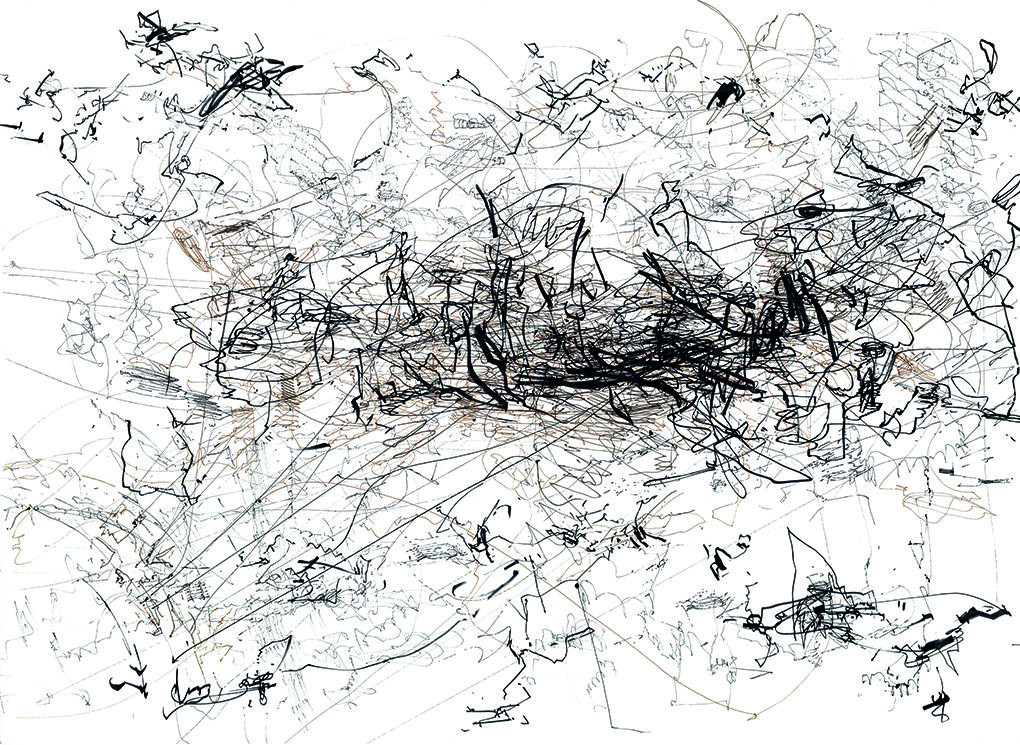Günter Günschel
Betts Project is pleased to present the first exhibition of German architect Günter Günschel (1928–2008) in the UK.
The exhibition of plotter drawings and anaglyph diagrams, made between 1988 and 1991, represents the most comprehensive presentation to date of this important and rarely exhibited body of work, showing the unique processes and ideas developed outside of the usual conventions of architectural drawing.
Günschel was the chair of experimental architecture at the Braunschweig School of Fine Arts from 1968 to 1998, the experimental work operating between art and architecture. In her publication Günter Günschel, la rigueur de l’imaginaire, Cornelia Escher writes: “Günter Günschel’s work reflects his research on the innovation of architectural forms. Throughout his career dedicated to experimentation, the designer’s predilection for pure and rigorous geometry blended with his boundless imagination and expressiveness. Fascinated by mechanical processes for the production of art, he became a pioneer in the field of digital architecture.
He was an early adopter of the computer in the 1980s as an experimental tool. His research on fractal geometry, a harbinger of computational architecture, places him close to the Deconstruction movement.”
The earliest works in the exhibition are the anaglyphic drawings from 1988 which elucidate Günschel’s first extension of the spatial form into its multi-dimensional potential. Computerzeichnungen (1989) demonstrates a pressing, bending and unfolding of the schematic grid into a more abstract whole. Günschel’s structures begin to overlap each other effacing their original form whilst creating new and imaginary forms within them. The black-and-white “Freigeregelte” abstract line works made between 1990-91 radically expand the conventional architectural drawing; the plotter has been manipulated by magnetic fields. Günschel continues: “a computer and plotter are the production tools for these drawings. Manipulations to their machine technology led to open ended control processes which, when deployed by the devices, resulted in a new type of estranged drawing. Each drawing is a one-off.”
Like D-G Emmerich, Robert Le Ricolais and Buckminster Fuller, Günschel pursued a dream of light and mobile architecture freed of reality’s constraints. In 1957 he designed and built with Frei Otto the structure of the City of Tomorrow pavilion for the Interbau international exhibition in Berlin. In 1958, Günschel joined the Groupe d’Etude d’Architecture Mobile (GEAM) founded by Yona Friedman. In 1960, for the GEAM exhibition in Amsterdam, he designed a machine for manufacturing inflatable houses.
Günter Günschel studied architecture at the Giebichenstein School in Halle (1947–49) then at the School of Architecture in Berlin. He is the author of numerous articles and books (notably Große Konstrukteure in 1966). He built several university housing complexes between the 1970s (Wolfsburg) and 1990s. His work is part of public collections including MoMA, New York; SFMoMA; Carnegie Museum of Arts, Pittsburgh; FRAC Centre, Orléans; Victoria and Albert Museum, London and the Canadian Centre for Architecture, Montréal.
